Japanese Crafts that Not Only Look Good, But Also Have Benefits
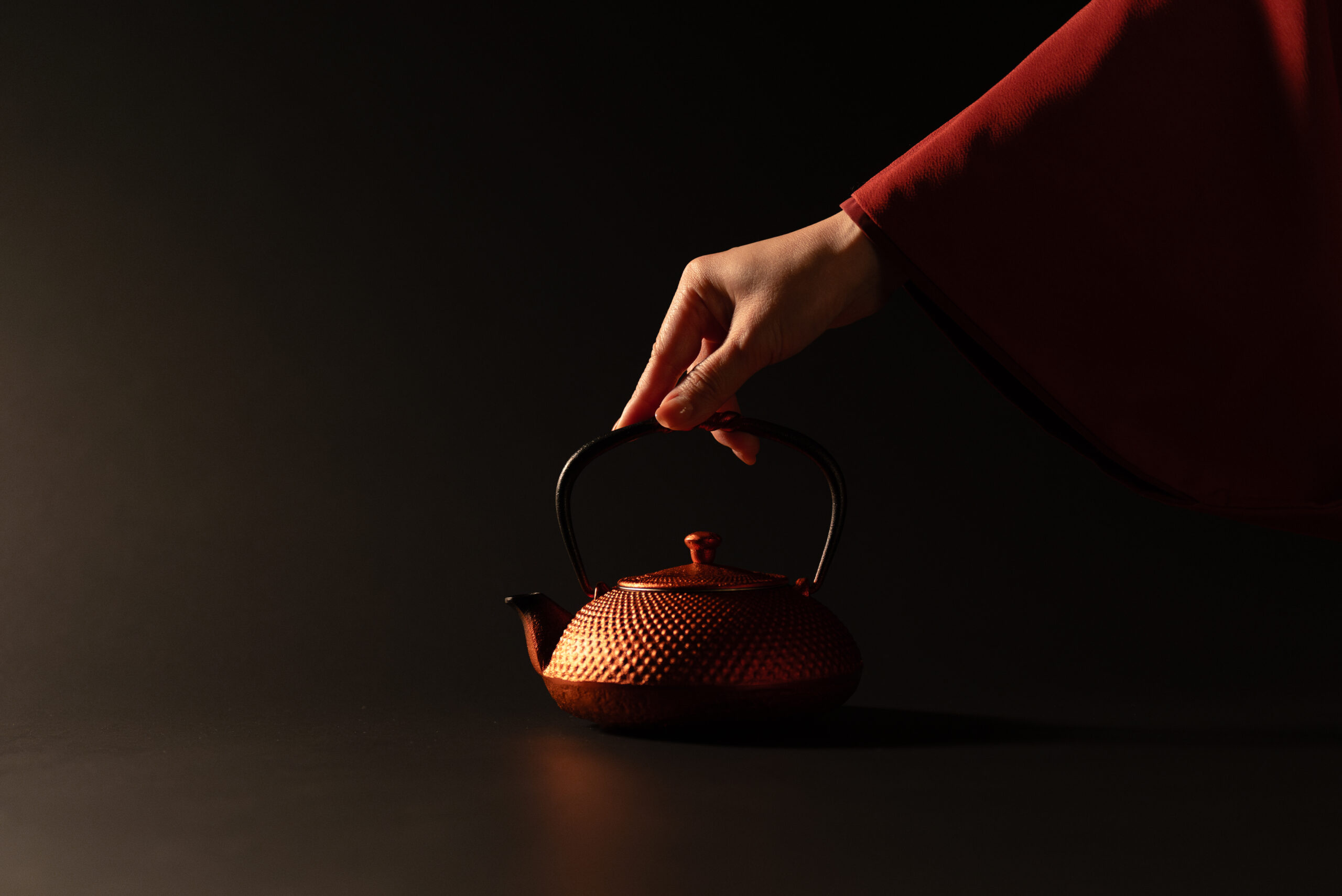
Japanese traditional crafts are not only beautiful, but alsoThat which has the efficacy to improve our health and quality of life.There are many Water boiled in a Nambu tetsubin iron kettle replenishes iron, while a tin sake cup mellows out the taste of sake. Akita cedar bento lunch boxes keep rice tasty, and lacquerware protects food with its antibacterial properties. In addition, Japanese paper wallpaper and rush grass for tatami mats regulate humidity and purify the air.
Incorporating these into a modern Japanese lifestyle will make adult quality living healthier and richer. This article describes how to do so.It's not just about looks, it's about benefits."The exhibition introduces a wide range of crafts with historical backgrounds and modern-day applications.
Article
- 1.Nambu Tekki - Mildly mellow hot water, tasty iron replenishment
- 2.Tin Sake Cups - Sterilizing action mellows water and sake
- 3.Bento Boxes - Wooden Bento Boxes Protect the Deliciousness of Rice
- 4.Lacquerware - naturally antibacterial vessels
- 5.Washi - a natural filter that regulates humidity and purifies the air
- 6.Tatami (Igusa) - Japanese flooring that purifies the air and soothes the soul
Nambu Tekki - Mildly mellow hot water, tasty iron replenishment
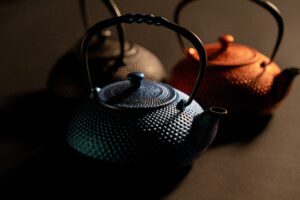
Nambu ironware from Iwate Prefecture is a traditional craft with a 400-year history. The most representative of these is the tetsubin (iron kettle), which was made by downsizing a tea kettle and has been popular as a tool for boiling water for common people since the Edo period (1603-1868). The heavy iron kettle has a surprising effect not found in other kettles. Water boiled in an iron kettle removes the chalky (chlorine) odor of tap water,Soft and mellow hot water that is soft to the palateThis is because the iron ions that dissolve from inside the tetsubin during boiling react with and neutralize residual chlorine. This is because the iron ions that dissolve from inside the tetsubin during boiling react with residual chlorine and neutralize it. The chlorine removal effect of an iron kettle is considered superior to that of kettles made of other materials.
In addition, the water boiled in an iron kettle containsBivalent iron easily absorbed by the bodyis dissolved. Daily white water or tea naturally supplies iron and is effective in preventing anemia. In fact, studies have shown that 80-951 TP3T of the iron leached from Nambu ironware is this divalent iron, which can help improve anemia with continued use.
Nambu tetsubin are said to last a lifetime, and the more you care for and use them, the more water stains will grow inside and the more delicious the water will become. In the cold season, the boiled water also humidifies the room, making it both tasteful and beneficial.
Nambu ironware is said to last 50 to 100 years if used continuously. In modern timesIH-compatible productsThe Nambu Tetsubin Tetsubin is now also available, making it easier to incorporate into the kitchen. Drinking white water boiled in a Nambu Tetsubin iron kettle every morning will keep your body warm and replenish iron content. By incorporating traditional handicrafts into your daily life, you can enjoy a modern Japanese lifestyle while also staying healthy.
Tin Sake Cups - Sterilizing action mellows water and sake

Tin is a metal that has been used since ancient times to make sake and tea utensils, and has been said to prevent water from spoiling in tin containers, and to remove the tasteless taste of sake. Tinware and tea utensils have been used since the Edo period (1603-1868), and even today beautiful tinware continues to be produced by such craftsmen as Takaoka Copperware (Toyama) and Osaka Tinware (Osaka). The silvery-white tinware is not only elegant in appearance, but alsoIonic effect mellows the taste of drinksThe main attraction is that it makes the
Tin is an extremely rust-resistant and antibacterial material among metals. Because of its coarse molecular structure and numerous microscopic holes on its surface, it absorbs and purifies impurities in water and alcoholic beverages. As a result, the unpleasant odor of tap water disappears, and the off-flavor of alcoholic beverages is reduced. For example, beer served in a tin beer tumbler will have a creamy foam, and sake served in a tin sake cup will feel surprisingly soft on the palate. Tin ions are also said to have the effect of breaking down fusel oils produced during the aging process of sake, making it a perfect sake container.
Tinware's benefits do not end there. Because of its excellent sterilizing properties, tinware can be used as a vase for fresh flowers to prevent water from spoiling and prolong the life of flowers, and tea leaves placed in a tin tea caddy do not lose their aroma.Tin is stable in air and water and does not leach toxic substancesTherefore, it is a metal that can be safely used for tableware even today. Furthermore, because of its high thermal conductivity, the vessel itself becomes cool when cooled in a refrigerator, making cold drinks taste even better.
Tinware because of its moist luster and familiarity with the hand,The more you use it, the more it tastes good.Tinware is also attractive. Tinware products with modern designs, such as sake cups, tumblers, and beer glasses, are also on the rise and will play an active role in your modern Japanese lifestyle.
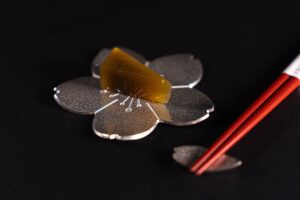
Bento Boxes - Wooden Bento Boxes Protect the Deliciousness of Rice
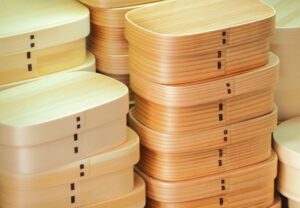
Bento boxes made from Akita cedar are popular for their lovely grain and rounded form, but in factA reasonable tool to keep your lunch tasty.It is also a traditional craft. Bent wappa is a traditional handicraft made by bending cedar boards in boiling water into rings and fastening them with cherry bark. It is said that samurai and farmers in the Odate region of Akita began making bento-wappa as a side job during the Edo period (1603-1868), and it became popular as a lunch box because it is light, strong, and breathable.
The greatest feature of wooden bent noodles is,Humidity control and antibacterial effectsIt is. When freshly cooked rice is packed in a white uncoated bentwood rice bowl, the cedar wood breathes and absorbs excess moisture from the rice even after the lid is closed, keeping only the proper amount of moisture. This means that the rice will not become soggy over time and will remain fluffy and delicious even after it cools down. Conversely, when the weather is dry, such as in winter, the wood releases a moderate amount of moisture, preventing the rice from becoming tough and hard. The wood naturally regulates the humidity inside the lunchbox.
In addition, coniferous trees such as cedar and cypress haveAntimicrobial component called "phytoncide."and is effective in preventing the growth of bacteria. The bento-wappa lunch box is also more air permeable than plastic, which prevents damage to side dishes and rice, and is especially effective in preventing food poisoning during the summer months. The fresh woody aroma of cedar softens the smell of food, and the subtle aroma transferred to the food also stimulates the appetite.
To use bento-wappa, simply fill it with rice and side dishes, just like an ordinary lunch box. Wash it immediately after use and dry it thoroughly to prevent mold. Recently, there are products that are easy for beginners to use, such as those with a urethane coating on the inside for easy maintenance, and those with a lacquer coating for increased durability and the antibacterial effect of the lacquer. Bent wappa, which deepens in flavor the more you use it, is truly an excellent product for the quality of life of adults.
Lacquerware - naturally antibacterial vessels
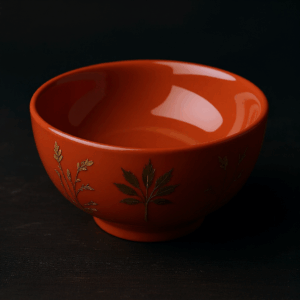
Traditional Japanese lacquerware (lacquered dishes) has long been appreciated for its lustrous beauty, lightness, and durability. There are various types of lacquerware, such as soup bowls, lunch boxes, and trays, but there is more to lacquerware than meets the eye. One of them isantibacterial actionIt is. Urushiol, the main component of lacquer, is known to have antibacterial properties, and lacquered dishes protect food by inhibiting the growth of bacteria.
For example, Wajima-nuri lacquered lunch boxes from Ishikawa Prefecture areOutstanding strength and excellent antimicrobial activityWajima bento boxes are made with a wooden base mixed with diatomaceous earth and coated with multiple layers of lacquer. Wajima bento boxes, with their wooden base mixed with diatomaceous earth and coated with layers of lacquer, moderately regulate internal humidity, so that even if you pack a sandwich in the morning, the bread will not dry out and remain moist until the evening. Furthermore, thanks to the antibacterial properties of the lacquer, the food is resistant to damage even when stored for long periods of time, making it safe even during the rainy season.
Lacquerware is also an excellent insulator. Bowls made of wood and lacquer are not too hot to hold in the hand when filled with hot miso soup, and the soup inside does not get cold easily. Furthermore, they are resistant to cracking even if dropped,Even if the surface is scratched, it can be repainted and used for a long time.is also eco-friendly and attractive.
The history of lacquerware is said to date back to the Jomon period, and the Japanese have incorporated lacquerware into their daily lives to enhance hygiene and practicality. Even today, if you replace your daily soup bowl with a wooden lacquer bowl, you will surely notice how soft it feels in your mouth and how comfortable it is in your hand. Lacquerware has an image of being expensive, but if you do not throw it away but use it carefully as a lifelong possession, it will ultimately become an investment in a richer lifestyle. We encourage you to incorporate lacquerware, a traditional craft, into your daily life and experience the natural antibacterial power and warmth of lacquerware.
Washi - a natural filter that regulates humidity and purifies the air
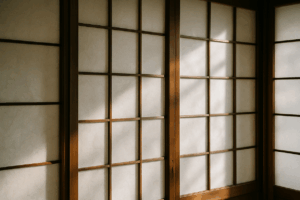
Japanese washi is another traditional material that combines visual beauty and functionality. Washi is used indoors in the form of shoji screens, fusuma sliding doors, and washi wallpaper,Humidity control and air purification that would surprise even modern air conditioning equipmentWashi is a porous paper made from natural fibers such as kozo and mitsumata. Washi is a porous paper made from natural fibers such as kozo (paper mulberry) and mitsumata (mitsumata), which absorbs moisture from the air when the humidity is high and releases the stored moisture when it is dry, automatically adjusting indoor humidity. Exactly.Breathing wall materials and fittingsIt can be said that
It is this moisture absorption and desorption that makes shoji paper feel cool to the touch in summer. In some experiments, a room covered with washi paper was found to be so chilly without air conditioning that it was effective in reducing humidity and temperature rise. In winter, on the other hand, Washi can be used in place of a humidifier because it relieves the dryness of the room.
In addition, Washi fibers areNatural filtering roleIt also fulfills the following functions. It absorbs dust, pollen, and unpleasant odor particles in the air and helps to clean the indoor air. Shoji paper also softens and diffuses light,Cuts about 901 TP3T of UV raysIt also has the effect of bringing gentle brightness into the room. The reason why the light through shoji screens in Japanese-style rooms is so pleasant is because washi adjusts the light, which is harmful to the eyes.
Interior design using washi paper has been revisited in recent years as a form of Japanese modern living, and it is being applied to lighting fixture shades and art panels. Craftsmen of traditional Echizen and Tosa washi are also proposing stylish washi wallpaper and lampshades that fit into modern homes. Washi creates a comfortable indoor environment with its humidity control and deodorizing effects,Eco-friendly and healthy materialsWashi wallpaper is attracting attention around the world as a way of creating a sense of purity in a room. Even if you only accent one side of a Western room with washi wallpaper, the air in the room will seem clearer.
Tatami (Igusa) - Japanese flooring that purifies the air and soothes the soul
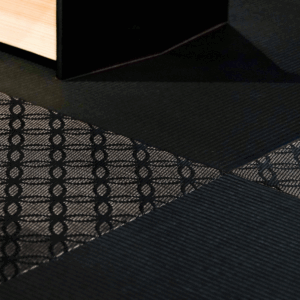
Tatami mats, an indispensable part of the Japanese home, are also a traditional craft product with outstanding functionality. The rush used to make tatami mats has a surprising effect. Rushes are spongy and porous in cross-section, and the countless cavities inside their stems are responsible for their excellent humidity control function. When humidity is high, tatami absorbs moisture, and when it is dry, it releases the stored moisture,It keeps the room at a comfortable humidity level throughout the year.Tatami is a natural humidity regulator. The reason why it is refreshing to lie on Tatami on a hot and humid summer day without feeling sticky is because Tatami works as a natural humidity regulator.
In addition, rush grass hasAbility to adsorb and decompose airborne toxic substancesThere are also It has been confirmed that tatami rooms lower the concentration of formaldehyde and nitrogen dioxide, which cause sick building syndrome, and that the rush grass purifies the air in the room. The fresh blue scent (phytoncide) unique to rush grass also has a relaxing effect, calming the body and mind like aromatherapy. The soothing effect of the fragrance and the soft touch of the tatami may be the reason why you feel relaxed when you enter a tatami room.
In addition, tatami has moderate cushioning properties,It eases the burden on the feet and legs when walking.It is also a safe and comfortable place for children and the elderly to sleep. It also has the advantage of absorbing shock and preventing injury in the event of a fall, making it safe for everyone from small children to the elderly. It is also highly insulating, being cool in summer and slightly warm in winter. Although it is a traditional flooring material, it is in fact a high-performance mat with a full range of functions.
In recent years, modern tatami mats such as edge-less half-tatami mats and colored tatami mats have appeared on the market, and an increasing number of homes are adding tatami corners as accents to Western-style rooms. Tatami culture is being reevaluated not only because of its design, but also because of theseHealth and comfort benefitsTatami mats are now being reevaluated. For example, installing Tatami in a bedroom helps regulate humidity and promotes a good night's sleep, while creating a Tatami space in a corner of a living room creates a relaxing and healing space for the family. If you are looking for a modern Japanese lifestyle, please try using Tatami to experience the wisdom of Japan.
Places in Sapporo where you can experience these crafts
These are just a few of the traditional Japanese crafts and natural materials that have benefits beyond just looking pretty. Located in Kita Maruyama, SapporoJapanese Modern N6 Kita MaruyamaYou can see and touch these crafts in person at the We also offer ideas and coordination for Japanese modern living, so please feel free to stop by if you are interested. Why not incorporate these beautiful and functional traditional items into your daily life and make your everyday life more quality and healthy?

